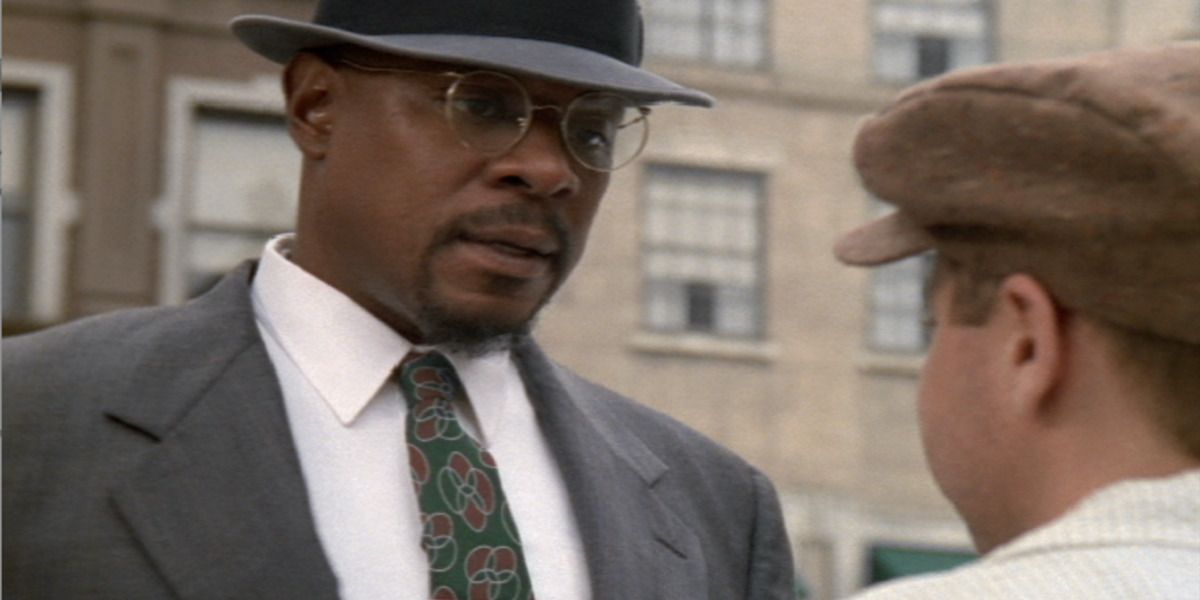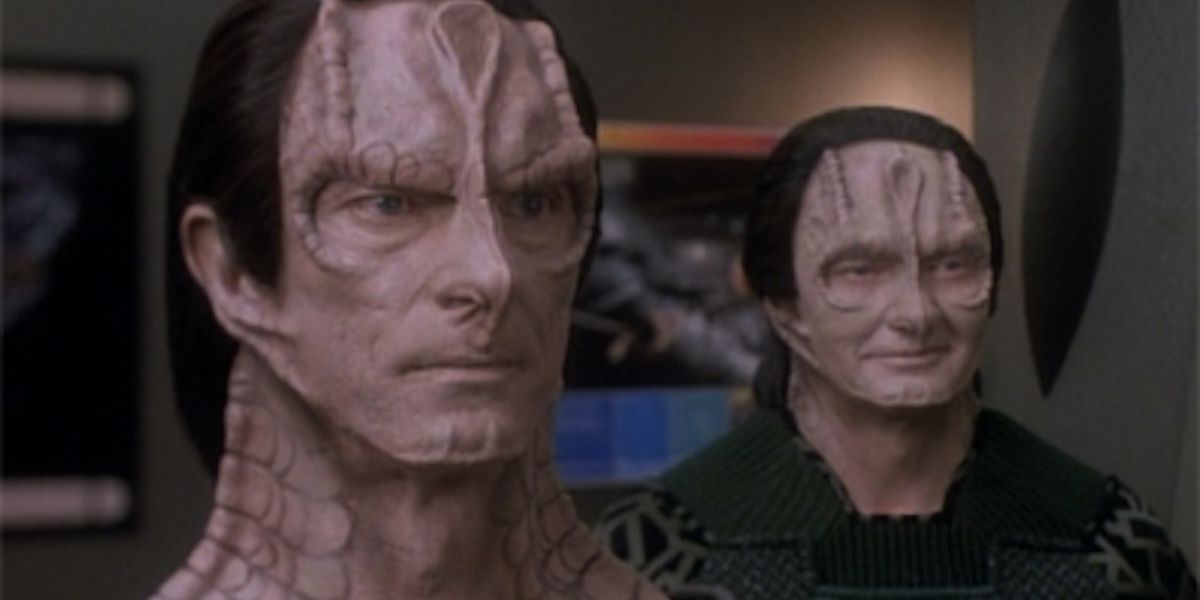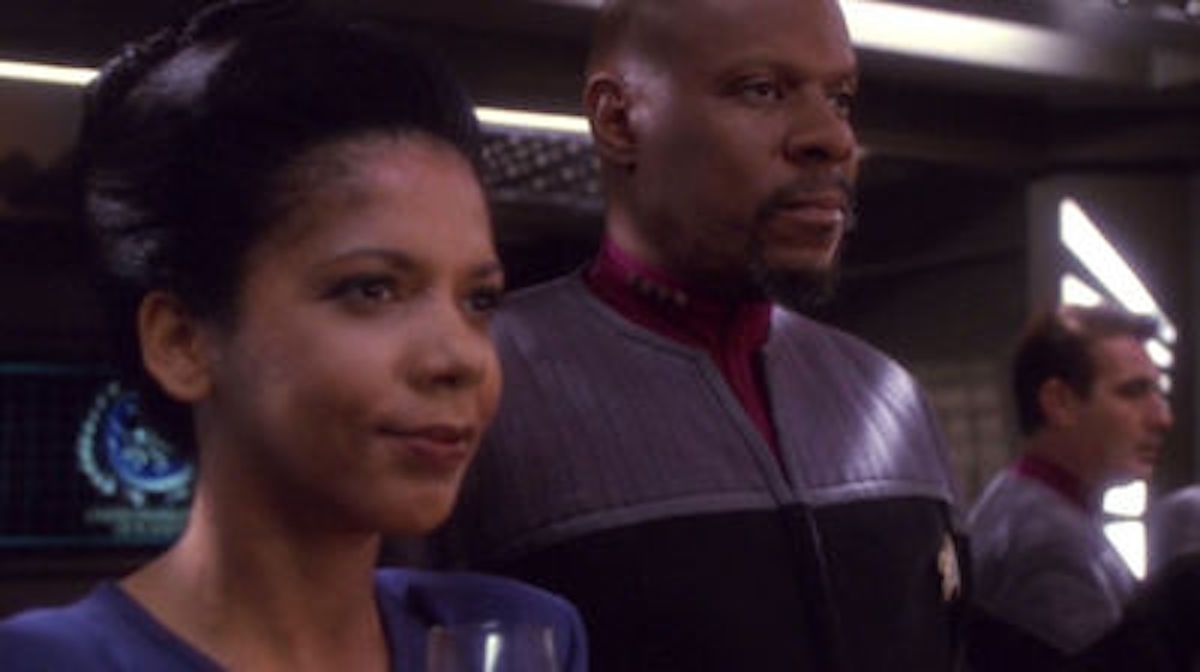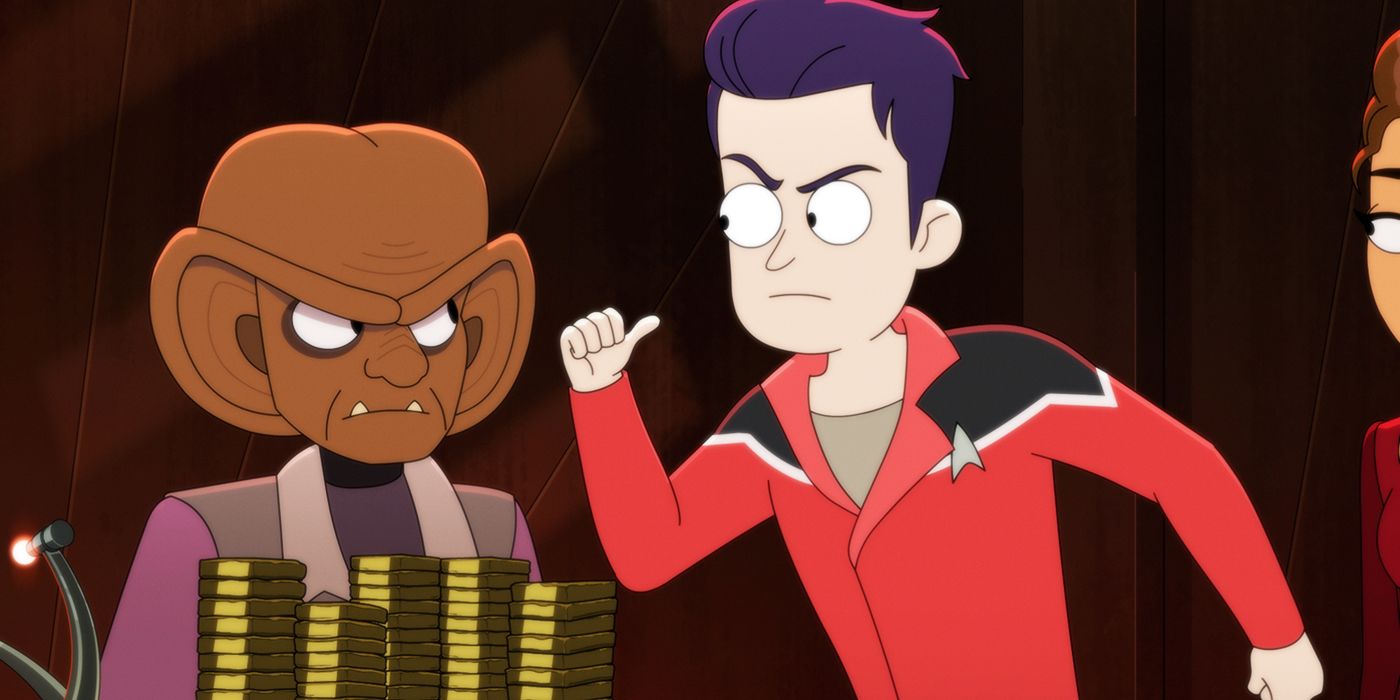Star Trek’s return to the beloved characters of The Next Generation is coming to a close, and with the final season of Picard airing this year, this may be the last time that the cast graces our screens in their classic roles. However, it shouldn’t mean the end of revisiting some classic Trek series. There’s always been a beloved (but severely underappreciated) Star Trek series waiting in the wings for a proper modern revival: Deep Space Nine. While it might seem a bit soon after Picard to return to another old incarnation in the series, make no mistake, Deep Space Nine is well deserved of a rewatch and a return.
What ‘Picard’ Does, ‘Deep Space Nine’ Did First
The Next Generation is not only arguably the most beloved series in the Star Trek franchise (bar its middling first season) but one of the most influential sci-fi shows of all time, and the show is one of the best episodic series of its era. As the franchise’s first attempt at following a cast outside the original series Enterprise crew the show had big shoes to fill — and over the course of its mind-boggling 178 episodes (a feat no other show in the franchise has matched to date), it succeeded in that goal. Jean-Luc Picard (Patrick Stewart) proved to be a very different but well-respected heir to the throne that James Kirk (William Shatner) became famous for, and the show’s inclusion of new and exciting characters such as Klingon officer Worf (Michael Dorn) and android officer Data (Brent Spiner) gave more unique outsider perspectives to the series and prompted unique philosophical questions. It truly felt like a step forward for the franchise. Klingons were no longer simple villains but a culture to be cooperated with and learned about, alien species could vary from human-like to nearly incomprehensible life forms. Almost all additions the show made to the canon have become extremely iconic, with The Borg (first introduced in the second season) quickly becoming one of the most terrifying and unique villains in science fiction history.
With all that considered, it’s no surprise that Picard was eventually made. The world of TNG was so inviting that fans had been clamoring for a proper return. However, while the series has largely been received well by critics and fans, it’s a very different final product than what TNG delivered. Picard is a far darker show than TNG was (not to say that the show was never afraid to handle dark topics), and while TNG evoked a fairly comfortable episodic format for the majority of its run, Picard utilizes a serialized plot. The show is good, but it can sometimes feel very unlike what made the original TNG so beloved. With its darker and edgier tone, more morally complex cast, frequent political edge, and serialized format, it feels more like a spiritual successor to a completely different 90s-era Star Trek show: Deep Space Nine.
While DS9’s first two seasons seemed to mimic TNG’s more episodic philosophy, the show always had a hint of a greater plot forming in the background. Being the first Star Trek series to remain in a single location rather than a constantly moving starship, the consequences of each episode’s conflict can’t simply be left behind by moving forward to a new star system, the recovery of the nearby planet Bajor from its long-term occupation by the hostile alien race the Cardassians is a constantly evolving issue with new challenges for the cast to tackle each episode. With the introduction of The Dominion at the end of the show’s second season, Deep Space Nine begins its true plot: an expansive and all-encompassing war the likes of which Trek hadn’t seen since its brief conflict with The Borg. DS9 diverted from a series model like TNG, which allowed audiences to (with occasional exceptions) jump into the action at any time, and instead adopted a far more serialized format, a risky move in the pre-streaming era. The show rewarded patient and attentive fans with callbacks and season-long plots that grew and changed from episode to episode. Despite using the characters of TNG, Picard seemingly has a bit more in common structure-wise with DS9 than it does with the series it draws its cast and title from.
Due to being serialized, DS9 is uniquely primed for a sequel series in ways that TNG never was. It’s a show that at times feels so deeply modern in its execution that the only things that feel out of place are some outdated CGI shots and grainy camera quality. A sequel series could get as dark and political as it wanted and still be exactly in step with what makes DS9 so beloved. And speaking of politics.
‘Deep Space Nine’ Was Not Afraid To Get Political (And Do It Well)
In our modern media landscape, the idea of a series ‘getting political’ is a bit of a can-of-worms statement. It could mean anything from being thoughtfully handling a political issue, to clumsily inserting some ‘ripped from the headlines’ event, to simply having POC cast members. Deep Space Nine is a show that is fundamentally about politics, deftly utilizing its setting to comment on real-world issues while entertaining the audience with its grounded and well-written characters.
The series debuted with a controversial choice right off the bat with the introduction of Benjamin Sisko (Avery Brooks), the first Black commander (and later the first Black captain) in Trek history. Star Trek has been renowned for its progressive ideals since The Original Series premiered in 1966 with a multicultural cast and an attempt to portray a complete absence of the sort of racial prejudices that existed at the time. However, many science fiction fans remain stubbornly opposed to any attempt to continue this legacy, the idea of major Black characters even existing in science fiction remains frustratingly controversial even to this day, and Avery Brooks’ appearance was policed by producers prior to the series premiere who were concerned about him looking “too street” for the general viewing audience. However, as the show continued, it was clear that the showrunners were quite aware of how significant this casting was, not only to the Star Trek franchise but to science fiction as a whole.
Sisko, like Picard before him, is a towering presence in his series, exuding both charisma and authority throughout the show’s run. However, unlike Picard, Sisko is given more opportunities to showcase other sides of his personality beyond his role as commander (and later captain) of the titular space station. In his interactions with his son Jake (Cirroc Loften) we are shown a doting father that deeply cares for his son’s wellbeing, and with his love of baseball, we are further shown that the stern and serious commander has a softer side as well. He’s one of the best main characters Trek has ever produced. DS9 even later brought the topic of Black exclusion from science fiction to the forefront in one of its most acclaimed and beloved episodes, “Far Beyond The Stars,” which used the setting of a 1950s science fiction magazine to comment on the obvious racism inherent in the opposition to a Black captain in a show made forty years later.
Outside metatextual political choices, the show was deeply invested in controversial issues, especially the issue of colonization and occupation, most often brought up in relation to main cast member Major Kira (Nana Visitor). Through her background in the militia that helped force the Cardassians off her planet, DS9 was able to address the ethics of terrorism and guerilla warfare, the horrors of concentration camps and comfort women, and the role of religion in these conflicts – an especially notable inclusion in the otherwise largely atheistic Star Trek franchise. With occasional exceptions of elements that feel dated or unwisely handled, DS9 examines its political topics with a great deal of tact and grace, utilizing a dark tone but never feeling as if it’s going for shock value with its subject matter. Capable simultaneously of having serious episodes about genocide and chemical warfare, and having an episode where the characters just play baseball together, and it never feels jarring. It is a very mature show that respects its audience enough to not handle these topics with kid gloves, and it has aged astonishingly well in the more than twenty years since it ended.
This forward-thinking and progressive tone, paired with an unashamed interest in modern politics surrounding war and the effects of colonization, means that DS9 has debatably aged the best out of any classic Trek series. Concepts originated in early shows, such as the body-swapping gender-shifting Trill, are taken from a poorly-aged comment about how society “isn’t ready” for same-gender relationships in TNG to an impressively prescient portrayal of the experience of transitioning and the way trans people are treated in DS9. Some elements do need updates, showrunner Ira Steven Behr acknowledged in the 2018 documentary What We Left Behind that not enough of an effort was made to present queer stories in an intentional and serious way. This introspection arguably makes the prospect of a sequel series even more appealing, if the series can give the same respect and maturity to modern topics as it did to social issues in the 90s, it can reap great rewards.
There’s Already a Framework In Place For a ‘DS9’ Sequel Series
Not only is DS9 better suited from a strict story-to-story basis to have a sequel series like Picard, but it already has a plan in place to do so. While TNG ended with a well-received but status-quo-continuing finale, DS9 instead ended its tenure with a series of shocking galaxy-changing revelations and character changes. It’s an excellent ending to the series, but it ended on a cliffhanger regarding the fate of several of its main characters that has left fans clamoring for more for decades. While TNG left plenty of interesting plots and threads for Picard to pull on, DS9 has many actual plots and characters already primed for a revisit.
The creators have also shown a willingness and desire to finish the series with one last return, much of What We Left Behind is made up of members of the original writing team detailing a possible continuation of the show that was organically set in the same time frame after the original series ended — two years before Picard would grace our screens using the same concept. According to Ira Steven Behr, all the planning of a hypothetical Season 8 was just an « exercise, » but he also admitted that the team became quite energized in pitching a new season. The original creators are still passionate about expanding this world, interested in where structures like The Dominion had changed in the time away. A sequel series would definitely be enhanced by this palpable excitement that the original team has for the property, a wealth of new storylines just waiting in the stables if a series was greenlit.
A sequel series would work in our modern context because, in its own way, DS9 already works so well in modern terms. TNG is a show that is immersed in optimism and a curious and lighthearted tone, which makes the far more serious Picard feel much more jarring as a continuation. DS9 doesn’t have this problem, it’s dark and industrial aesthetic and serious tone already feel like a perfect mesh for what Picard was aiming for. The problems that a serialized show in the 90s would face have evaporated in the face of streaming; it’s no longer a big ask for an audience to be invested across an entire season of television, it’s almost expected. DS9 was a binge-worthy series before that word was even invented, and is probably the most future-proof show that Trek has ever produced.
Despite all of these great things DS9 was routinely underappreciated on a commercial and fan level during its original launch. Compared to TNG the series was never able to amass the same level of eyes on the show as its predecessor did, partially due to an almost vitriolic opposition to how different the series was compared to other Star Trek shows and partially due to syndication making the show difficult to follow (episodes would often show at late or unexpected hours with no reruns for months at a time, making it hard for all but the most dedicated of fans to keep up with the story). The show was very well critically received, and although it’s garnered an immense cult following, it’s never received the audience that it really deserved.
There’s been a recent resurgence in love and appreciation for the series (encouraged by a much-hyped Lower Decks episode) but in the wider canon of Trek DS9 has remained quite ignored. That’s why it deserves a sequel series now, a reappraisal of the series would drive audiences to the original series and would allow them to realize the excellent quality of the show’s ahead-of-its-time writing. With the series completed and now available on streaming, there’s never been a better time to watch it. With Star Trek experiencing a modern-day revitalization thanks to successful series like Strange New Worlds and Lower Decks, it’s important to recognize exactly what we left behind with Deep Space Nine.




